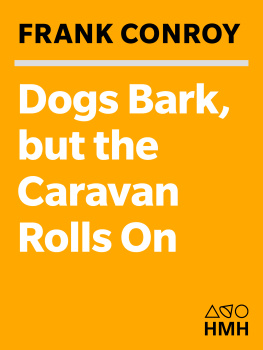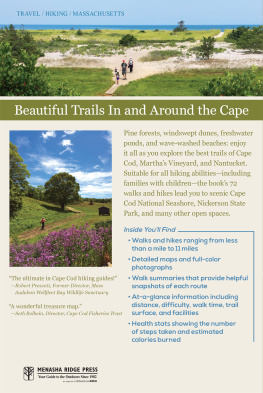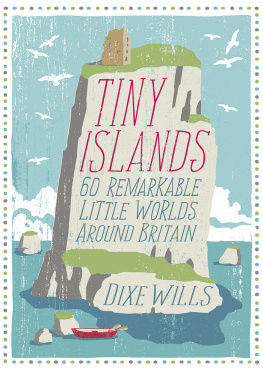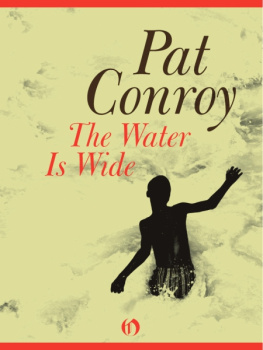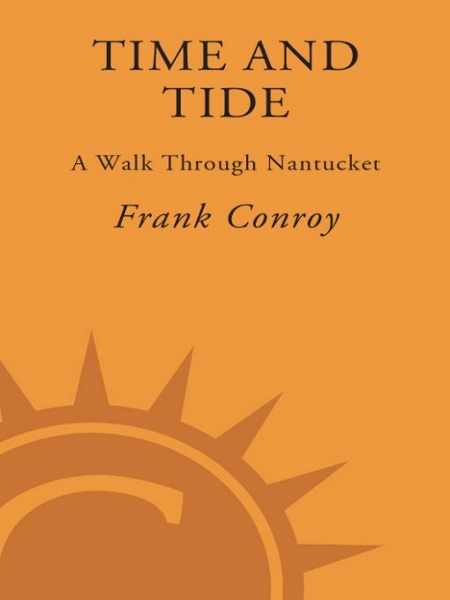
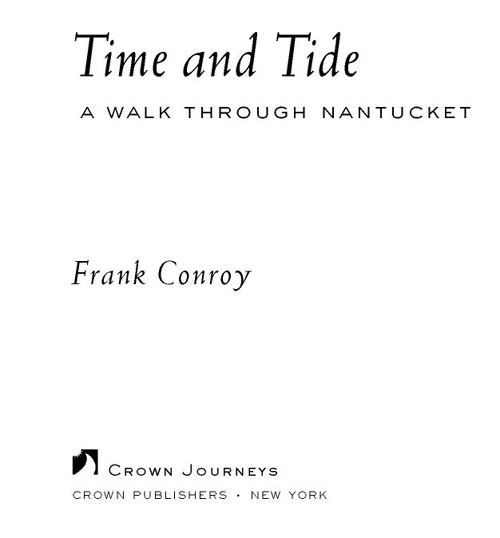
Table of Contents
To Liam
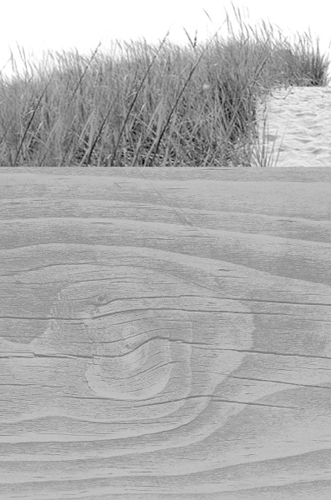

PHOTOGRAPHS
The Barn going up. 36
Madaket Millie. (Courtesy of the Nantucket Historical Association F-6488) 39
Roadhouse band: Marty Ehrlich, Frank Conroy, Stan Strickland, Hugh Burrows, Akira Tana (Credit: Gene Mahon) 68
Third World Softball. (Credit: Rick Blair) 78
Codfish Park. (Credit: Nicole Harnishfeger/ The Inquirer and Mirror) 96
Snow on Main St. (Credit: Cary Hazelgrove) 110
Gracie and Maggie. (Credit: Frederick G.S. Clow/ The Inquirer and Mirror) 128
Frank and engine. (Credit: Cary Hazelgrove) 130
PREFACE
I HAVE WRITTEN BEFORE ABOUT MY EARLIEST memory, but since it involves Nantucket, Ill do it again. I was perhaps three years old, being held by someone so I could look over the railing of the huge ferryboat on which we were passengers, to see the wharf, the water below, and the boys from town diving for coins thrown down by the people around us. Today, in my minds eye I can still see the images, the moving images, although as if through a tube, images in a bright circle, all elsethe larger setting, the boat, the town, the skylost.
A flashing coin is thrown, three or four boys dive, almost simultaneously, into the green water and disappear for a while. Almost simultaneously they emerge, one of them holding the coin aloft before slipping it in his cheek and looking up for the next nickel or dime. Young as I was I admired the boys, envying their energy and deft swimming. They seemed cheerful but also slightly tough, which interested me. The memory ends.
It was the Steamboat Wharf of Nantucket, I learned many years later and the occasion, a family excursion to an old hotel in Siasconset noted for its artsy clientele. (The building was torn down years ago and is forgotten now.)
I grew up with this isolated memory without knowing where it had occurred. I did not find out until I was in my thirties, when my mother mentioned it one night, apropos of nothing in particular, from what would turn out to be her deathbed in a New York City hospital.
Busy Days/Hot Nights
IN 1955, AT THE AGE OF NINETEEN, I ARRIVED on Nantucket for what I thought was the first time, accompanied by my college girlfriend and two other Haverford/Bryn Mawr couples. All six of us rented a three-room apartment over a bicycle shop (which still stands) for the summer. Those of us who needed them got jobs fairly quickly, because even in those days Nantucket in summer relied on imported labor. Wed come on a whim, the way kids used to do in the Eisenhower years, confident that wed survive one way or another. My girlfriend got a job as the hostess of a small restaurant, I played the piano at the Whalers Lounge in the basement of a ramshackle wooden hotel run by the Manchester family (where now stands the Jared Coffin House, a brick nineteenth-century building, still a hotel, pricey, with nothing ramshackle about it). One of the guys boned up on the small islands history from sources provided by a touring outfit and met the morning ferry every day to hawk the day-trippers into sightseeing rides in his little bus. A couple of the girls waited tables in a seafood joint. We survived, and had fun, walking the miles of empty beaches on our off time, swimming, having cookouts. We didnt use the apartment for anything but sleep, so jammed in were we those hot nights. Busy kids.
NANTUCKET IS AN island, roughly thirty miles out to sea, and its shape is important for several reasons. It has been described as a crescent moon by one writer, but to me it looks like some fantasized elfs slipper Madaket Harbor a worn-away toe, Surfside the sole, Siasconset the heel, Wauwinet the top of the heel, with a strip running up higher to Coskata, the long strip down Coatue, where the slippers laces would tie, and then, even higher above Coskata, the final decorative tassel of Great Point.
The island itself is about fourteen miles long, and averages out at perhaps four miles wide, except for the long eastern shore, less than half of which is habitable. The sandy beach just north of Siasconset (or Sconset, as it is called by islanders) is the easternmost edge of the United States. The familiar Mercator Projection to be seen in every schoolroom makes it look like Maine sticks out farther, but that is no more than an effect of flattening three dimensions into two. On a globe Nantucket beats Maine by between two and three degrees.
As you look at a map of Nantucket, notice the small points of Coatue jutting into Nantucket Harbor. (They are named First Point, Second Point, Third Point, Five Fingered Point, Bass Point, and Wyers Point.) Nantucket Harbor is in fact a series of basins, spilling sequentially one into the other as the tide rises or falls. The circular movement of the water within the basins cutting and shaping the thin, grassy strip into the configurations revealed on the map.
The harbor is five miles long, and is of special interest to marine scientists and geographers because its basin arrangement, and the way the water moves in circles within it, are unique in the world. I have personally explored every part of the harbor with a series (over thirty-five years) of small boats, and bear witness to its beauty. The sudden, slightly exotic atmosphere of Coskata at the head of the harbor, inaccessible except by water, usually deserted, except in August, with its glades, hills, long ponds, and dunes, is especially alluring. Any one of the points, as you return, is worth exploring. You can swim in the shallows, fish for bass or bluefish in deeper waters, or simply cruise along in the sun.
Despite its great area one is never out of sight of land in the harbor, which is reassuring to the inexperienced sailor. If a fog bank rolls in and you cant see more than twenty feet in any direction, the thing to do is cut your engines, or lower your sail, and wait it out.
As seen from the Atlantic Ocean, Melville describes Nantucket thusly: a mere hillock, and elbow of sand; all beach, without a background.
And so it still appears from a distance, although not quite as bare as it was in the first half of the nineteenth century. A sense of the oceanthe sound of it, or the smell of it, or a certain purity to the airis felt everywhere on the island. Indeed, its a pretty small patch of land, mostly moors because the severity of the winter winds preclude the growth of trees over much of its surface. There are a few hidden forests where the topography allows mostly scrub oaks. It resembles southern Scotland more than it does the neighboring island of Marthas Vineyard or the mainland. It is best explored on foot, off the roads, in September and October, when the moors change colors, veering toward purple, and the sunlight turns winey. Some find it too bleak, but many, like myself, do not.
BUSY KIDS, WORKING, making love, endlessly talking and arguing about the books and ideas wed been exposed to the previous winter, we didnt have much time to explore. We seemed unable to get out of the lower Main Street area, with its side streets, post office, drug store, five & ten, etc.that fifth of the town that had been destroyed by the Great Fire of 1846 (which was the final blow to the islands foundering whaling industry) and rebuilt despite hard financial times. Once in a while wed bike out to Surfside, or walk around the crumbling wharfs and slips of the town waterfront, but that was about it. Not even the boy driving the tour bus saw very much going out to Sconset and back, stopping every now and then for water views or a look at the cranberry bogs. What one saw from the roads represented only a hint of the uniqueness of the island in those days. Now, with so many houses, hedges, landscaping, fences, and general prettifying on the sides of the roads, the hint is a good deal weaker.
Next page

